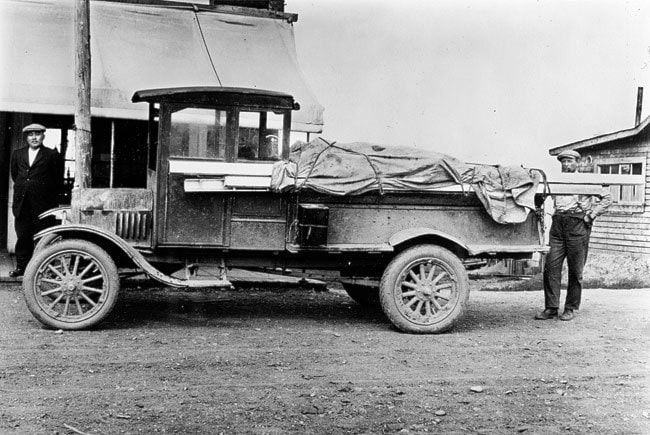I mentioned in a previous column that the Dawson City area had many beautifully created signs in its gold rush days, like the sign appearing in this column.
But I neglected to mention something in addition — two of my favourite signs were in Whitehorse in the recent past. They were the large, neon light, prancing horse sign on the Whitehorse Inn, soon to be displayed at the
MacBride Museum and the large, beautiful Keebird neon sign that showed a unique bird, sort of dancing with snowshoes.
The late Jack Needham had this sign mounted in the front of his unique Keebird drugstore on Whitehorse’s Main Street.
Also, thank you very much to John Layman for reminding us about his work and other sign painters that should be mentioned with this column.
Layman’s letter follows:
Jim Robb and I were speaking yesterday morning about his column, Can You Identify?
This column was about sign painters and signs during his time up here, and before from the gold rush days. This column had a shot of a very nice sign from the era. I bet it looked very nice in full colour.
Jim and I were talking about sign painters up here, and he did mention John Russell, but said he felt he missed a couple of folks, myself being one of them. So, the first person I worked for up here was Wally Vincent, and he
was good, but lacked some of the flair of John Russell’s classical education in the craft.
Another person who made many beautiful signs, and who bought Wally’s business, the Sign Shop, was Teri-Lynn Gold. Teri-Lynn and John were both calligraphers, as well as sign painters, as am I.
I have been doing various kinds of signage in Whitehorse for a few years now, and along with continuing to do calligraphy I have branched out into doing sandblasted signage, the most recent piece being the sign for the newly
dedicated Frank Slim Building. The sign sits above the main entrance, just below the peak.
I also did a piece of lettering to go along with Jim’s photograph and story about Mr. Slim. I am pretty much the only sign “painter” still doing most of my work by hand, as the hand-painted sign has gone the way of many
casualties of the digital era – all but disappeared!
While this is not a huge surprise, it is kind of sad this has happened, and along with hand-painted signs so has gone letter writing and to some extent, calligraphy, itself.
What will the grandchildren of my era find in a box in the attic? Handwritten letters? Notes and poems and who-knows-what – but handwritten who-knows-what? Not likely. And the disappearance of these simple things that were crafted by someone’s own hand to be held by a following generation … that is sad. There can be some magic in that kind of experience … so write a letter.
Thanks for Jim’s column. It is a fun column to read, especially the letters from folks whose memory is jogged by Jim’s efforts, or by “in-person” types of conversations, like he and I had.
John Layman
Calligraphica
Whitehorse
